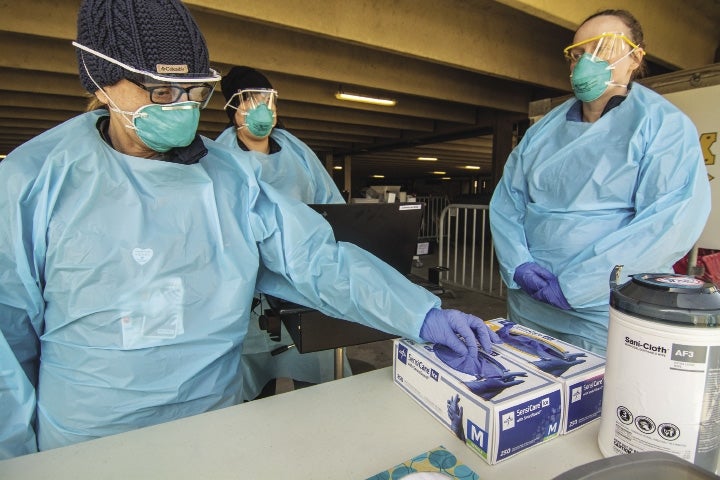Hispanic and Black patients represented a disproportionate share of COVID-19 hospitalizations in 2020, as did patients from lower-income communities, according to a new state report.
Staff from the Health Policy Commission on Wednesday presented findings from their interim report into the pandemic’s impacts on the state’s health care system, an analysis the agency was directed to undertake as part of a health care law Gov. Charlie Baker signed in January. A final report is due January 2022.
The commission also found that fewer Massachusetts hospitals were profitable in fiscal 2020 compared to the previous year, and said that while some hospitals had negative margins last year, federal and state relief funds prevented greater losses.
All categories of emergency department visits declined during the pandemic, with those considered potentially avoidable falling the most, the report said.
While the number of behavioral health-related emergency room visits was 16 percent lower in January to September of 2020, over the same months in 2019, the HPC found the percentage of those visits resulting in emergency-department boarding — defined as waiting more than 12 hours in the ED — was higher. ED boarding rates were highest among pediatric patients, who were also more likely to experience boarding lasting over 48 hours.
The report found that patients of color, particularly Black and Hispanic patients, represented a disproportionate share of COVID-related hospital admissions in 2020. Among patients 65 and older, Black patients represented double the share of COVID-19 admissions compared to their share of all admissions, and the share of COVID-19 admissions among Asian-American patients in that age group was 65 percent higher than their share of all admissions.
Hispanic patients made up more than twice the percentage of COVID-19 hospitalizations in both the 65-and-up and 18-64 age groups, versus all hospitalizations.
Sara Sadownik, the HPC’s deputy director of research and cost trends, called the data around disparities “very striking.”
“The factors that are driving these results demand attention, namely that people of color are more likely to have higher risk of exposure due to employment and housing conditions, as well as higher risk of severe disease due to social determinants of health such as access to nutritious food and environmental factors, among others,” she said.
The report also tracked disparities by community income, finding patients from zip codes with lower incomes accounted for a larger share of COVID-19 hospitalizations. The disparity was largest for patients in zip codes in the lowest quintile of median community income, or a household income of less than $59,000.
Patients in that quintile made up 25.5 percent of all admissions, but 31.1 percent of COVID-19 admissions. At the other end of the spectrum, patients residing in the top quintile — zip codes with a household income of more than $111,500 — represented 14.9 percent of all admissions and 12 percent of COVID-related ones.
State officials last year convened a task force to examine health equity problems during the pandemic and to make policy recommendations. The Health Equity Task Force has missed its deadline for a final report despite two extensions. A June 2020 law creating the task force gave it an Aug. 1 deadline. Lawmakers then extended the deadline to Sept. 15, 2020, and then to Feb. 28, 2021.
Costs and consequences
During Wednesday’s meeting, the HPC also voted to keep the state’s health care spending growth target at 3.1 percent. State law sets the benchmark at that level and gives the commission a limited authority to modify it.
Spending growth has exceeded the benchmark in each of the past two years analyzed, climbing 4.3 percent to $64.1 billion in 2019, after a 3.6 percent rise in 2018.
The state does not face consequences for outpacing the benchmark, other than heightened attention around rising medical costs. Providers and payers deemed to post excessive cost growth can be subject to additional HPC oversight, including a potential requirement that they complete a performance improvement plan.
HPC Chairman Stuart Altman said it was “troubling” to see above-benchmark spending in the past two years. The benchmark is having an impact, he said, because Massachusetts remained below spending growth levels for the rest of the county.
Commissioner David Cutler said he believes the HPC will likely “have to take action this year with respect to performance improvement plans.”
“I think that market participants are concluding that there’s not much of a consequence to going above the cap, which I think the state had not intended for people to have that impression,” he said.
Martin Cohen, the commission’s vice chair, said setting the benchmark is “one tool in our toolbox,” but that the HPC should look at its other tools as well, “particularly the performance improvement plans.”
“We may need to dig deeper in those instances where payers or providers are exceeding the benchmark and seek some real plans for addressing those situations,” he said.

